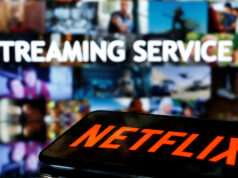One usual mistake many people usually commit in making sense of “political party” is the irresponsible disregard of substantial distinctions between and among: what it is, what it does, and what it can do. Sans these distinctions, people easily reduce “political party” to what is familiar, normal, obvious, and commonsensical in the present context. People nowadays tend to make sense of political party by merely describing what they are, using our knowledge of what they do, and then assume what they can do.
I find it disturbing that some people in power, do not know what political parties are, what they really do and what they can actually do, in our society. They believe that political parties no longer work and matter in the society because they are no longer ideological, they are popularity-based, election-oriented, etc. Do they really know what they are talking about?
What is political party? What is party politics? Why do we have politics of parties?
Scholars and academics use the concept of “political party” to pertain to a form of resilient and manifest local or national organization or grouping whose main purpose is to influence voters/supporters on election day and people in general on issues that affect the general public. Political parties shape public opinion; mediate the voters/people in advancing demands to various spaces of power in the government; create a sense of identity or belongingness; influence policy outcomes, and act as a form of socialization for emerging political leaders in the society.
Political parties tend to work like a government-in-waiting.
Their organization (e.g. party organizational structure, party committees, etc.) and dispositions (e.g. party discipline, party education, etc.) often complement those institutions, structures, functions, arrangements, processes, among other things, that are found in the government. Their primary aims are to produce and eventually effectuate policy outcomes that correspond to whatever “ideal” they have in their overall system of values and principles, called “ideology.” Ideology usually provides parties both the ideational wherewithal and programmatic direction in making sense of the systemic problems in the society, knowing the solutions to these problems, informing people of their roles in solving these problems and providing program of government that can make these things possible.
“Party politics” is understood as the unstable and dynamic interaction between political parties and their surroundings. It is known as the phenomenon where parties emerge, are institutionalized, and are mobilized to engage the people or even other parties to struggle for power. This “struggle” involves how parties are activated to arrange and act upon the means, structures, and institutions of power in the government.
Political parties, unknown to many, compete for the best framing on political issues in the society. They help people understand societal problems as they arise by providing them serious political guidance through their sponsored political education sessions, media appearances, and press releases. Through this, political parties become an alternative source of information on issues — thus, making it a staunch ally of those people who are excluded or harmed by the policies of the sitting party in the government.
As an alternative source of information, they are expected to give a better, if not, best perspective, and not the flawed version (false understanding) of the issue. This is where the real propaganda work of parties comes in. The task of the propaganda work is to catch the attention of the people, to publicize the message, and to vilify the wrong or flawed framing of the rival political party.
Also, this time during election period, parties should be allowed to work in some of the most crucial aspects of the electoral system. Making parties preoccupied all throughout the electoral process will force them to really do things that are expected of them — recruitment of members, coordinating with election administrators, training of candidates, research for platforms and issues, strategizing, etc. Through these things, you strengthen political parties by allowing various people to have real party participation in a collective manner — academics, political scientists, economists, social workers, communication experts, statisticians, accountants, election lawyers, etc.
Whether in power or not, parties are expected to engage issues by turning them into a real outcome. Issues are turned into a real thing by mediating them with laws or policies. Political parties, and not merely political personalities, provide the best understanding of the problem and the solution (that can solve that problem) by using time-tested values and principles that are not usually altered or changed through time.
These “ideologies” are not merely ready-made template of answers or set of “isms” that aim to know all centuries-old problems in the society. Instead, they provide depersonalized and thus, shared ideational resources needed to make a judgment on the issues at hand. Political parties and ideologies always go together because of this age-old partnership that dates back to the very dawn of parliamentary politics in the United Kingdom.
To engage in party politics means to foster and not to deter political parties to be political — to work in the society.
Arjan P. Aguirre is an Instructor at the Department of Political Science, School of Social Sciences of the Ateneo de Manila University. He handles courses on Politics and Governance, History of Political Theory, Contemporary Political Theories, and Electoral Reforms in the Philippines. He is also working as Consultant for Legal Network for Truthful Elections (LENTE) and Simbahang Lingkod ng Bayan (SLB).
aaguirre@ateneo.edu



